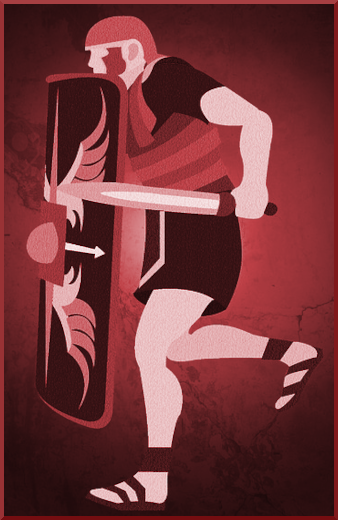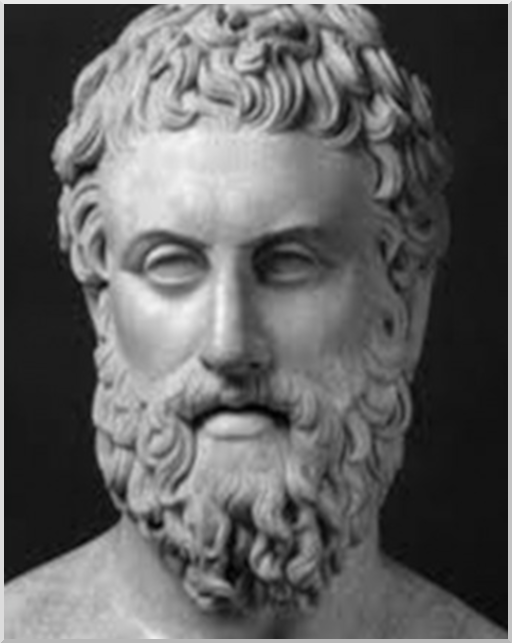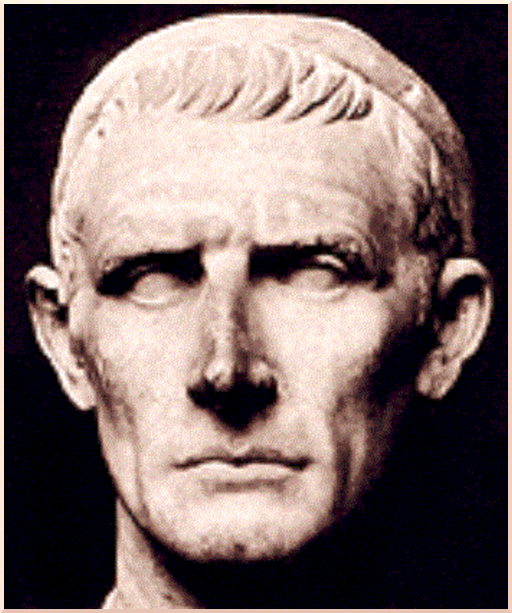The Third Punic War (149–146 BC) was the third and last of the Punic Wars fought between Carthage and Rome.
The war was fought entirely within Carthaginian territory, in what is today known as northern Tunisia.
When the Second Punic War ended in 201 BC, one of the terms of the peace treaty enforced by Rome stipulated that Carthage would be forbidden from waging war without seeking Rome’s permission.
Rome’s ally, King Masinissa of Numidia, a ferocious warrior and gifted leader, who’d distinguished himself in battle during several major encounters of the Second Punic War, exploited Carthage’s inability to wage war without Roman consent, to raid and seize Carthaginian territory with near impunity.
In 150 BC, angered and humiliated by King Masinissa’s repreated raids into its territory, Carthage sent an army, under Hasdrubal, against Masinissa, the treaty notwithstanding.
To add injury to insult the Carthagininan campaign against King Masinissa’s forces ended in complete disaster when the ensuing Numidian-Carthaginian Battle of Oroscopa turned into a huge Carthaginian defeat and the surrender of what remained of the Carthaginian army.
Harsh anti-Carthaginian sentiments, none greater than those voiced by Cato the Elder, would surface on the Senate floor, culminating in several leading senators demanding military action, using the Battle of Oroscopa as a pretext to legislate a punitive expedition.
In 149 BC, a large Roman army landed at Utica in North Africa.
The Carthaginians initially hoped to appease the Romans, but despite the Carthaginians surrendering most of their weapons, the Romans pressed on to besiege the city of Carthage.
The Roman campaign suffered repeated setbacks throughout 149 BC, despite a mid-level officer, Scipio Aemilianus, distinguishing himself in battle on several occasions.
–
Publius Cornelius Scipio Africanus Aemilianus (185–129 BC), also known as Scipio Aemilianus or Scipio Africanus the Younger, was the second son of Lucius Aemilius Paullus Macedonicus, the commander of the Romans’ victorious campaign in the Third Macedonian War, and his first wife, Papiria Masonis. Scipio was adopted by his first cousin, Publius Cornelius Scipio, the eldest son of his aunt Aemilia Tertia and her husband Publius Cornelius Scipio Africanus, the acclaimed commander who won the decisive battle of the Second Punic War against Hannibal.
(source: Wikipedia)
–
A new Roman commander took over the war against Carthage in 148 BC but did not fare much better than his predecessor.
–
Table of Content:
- III-A Cato the Elder
- III-B Third Punic War
- III-C Scipio Aemilianus
- III-149BCE-A Battle of Lake Tunis
- III-149BCE-B Battle of Nepheris (first)
- III-147BCE-A Battle of the Port of Carthage
- III-147BCE-B Battle of Nepheris (second)
- III-146BCE The Fall of Carthage
- III-D Mare Nostrum
- III-E Polybius
- III-F Titus Livius (Livy)
III-A. Punic Wars / Cato the Elder

POD-001: Cato the Elder, The Most Roman of the Romans.
POD-002: The Life of Cato the Elder (Plutarch)
POD-003: De Agricultura – Full Audiobook (Latin)
“Woman is a salacious animal, and it is useless to let go the reins and then expect her not to kick over the traces. You must keep her on a tight rein . . . Women want total freedom or rather – to call things by their names – the privilege to be licentious. If you allow them to achieve complete equality with men, do you think they will be easier to live with? Not at all. Once they have achieved equality, they will be your masters . . .”
(Cato the Elder)
“If you are ruled by mind you are a king; if by body, a mere slave.”
(Cato the Elder)
“Those who are serious in ridiculous matters will be ridiculous in serious matters.”
(Cato the Elder)
“Patience is the greatest of all virtues.”
(Cato the Elder)
(Cato the Elder)
PRIM-001 – Plutarch, Parallel Lives – The Life of Cato the Elder
PRIM-002 – De Agricultura (Cato, Marcus Porcius)
PRIM-003 – De Agricultura (Cato, Marcus Porcius)
III-B. Punic Wars / Third Punic War

VID-001: Punic Wars – Part I (Prelude)
VID-002: Punic Wars – Part II (Bellum Inexpertis)
VID-003: Punic Wars – Part III (A New Hope)
VID-004: Punic Wars – Part IV (Hannibal Strikes Back)
VID-005: Punic Wars – Part V (The Return Of The Scipi)
VID-006: Punic Wars – Part VI (Delenda Est Carthago)
VID-007: Punic Wars – Part VII (Romani Ite Domum)
VID-008: More Great Videos made by Flash Point History
At the annual election of Roman magistrates in early 147 BC, public sentiment and political support for Scipio Aemilianus had grown to such an extent that the usual age restrictions for consulship (limited to men of at least 43 years by the year 181 BC) were lifted in order for Aemilianus to be appointed consul and top commander in Africa.
Scipio Aemilianus, term as consul and commander initially suffered some minor setbacks when Carthaginians succeeded in repelling Roman attacks against their Harbor and Outer Defense Walls, but he responded by tightening the siege, constructing a large mole to prevent supplies from getting into Carthage via blockade runners.
The Carthaginians, having lost most of their remaining Navy at the indecisive battle of the Port of Carthage, were now faced with the dire prospect of hunger and starvation.
With the surrounding territories appeased, and Carthage left without allies, food supplies or replenishment, 146 BC would prove the downfall for what remained of Carthage fighting spirit.
In the spring of 146 BC the Roman Army finally broke through the last of the protective walls surrounding Carthage.
Angered by its obstinate resistance to Roman Rule, with stories of Hannibal’s campaign in Italy still told at campfires and family gatherings throughout the peninsula, with a keen eye towards confiscating Carthage’s trade routes and potential wealth, Rome unleashed its dogs of war upon the streets and citizens of Carthage.
During a six day extravagance Rome oblitherated its former enemy, burning the Great City of Carthage to the ground, largely destroying its buildings and infrastructure, tearing down its defensive walls, salting (“poisening”) the soil of its surrounding territories to discourage future generations from returning to the ruins of their forefathers fallen capital, killing approximately 80-90% of its original inhabitants while condeming the remaining 50.000 Carthaginians, primarily women and children, to a life of misery and slavery.
What vast territories formerly deemed Carthaginian were transformed into the Roman province of Africa with Utica as its capital.
–
Our historical knowledge of Carthage’s destruction is largely derived from Appian’s Punic Wars. After Scipio took Carthage in 146 BC, he sent a ship to Rome to inform the Senate.
Then, according, to Appian:
“The Senate sent ten of the noblest of their own number as deputies to arrange the affairs of Africa in conjunction with Scipio, to the advantage of Rome. They decreed that if anything was still left of Carthage, Scipio should obliterate it and that nobody should be allowed to live there. Direful threats were leveled against any who should disobey and chiefly against the rebuilding of Byrsa or Megara, — Byrsa (Carthage’s citadel) and Megara (an especially well-irrigated suburb associated with the Carthaginian elite) — but it was not forbidden to go upon the ground.”
(source: Garret Ryan, quora)
Although the whole “salting the land where Carthage had stood” story probably amounts to a later embellishment, one might infer that the whole city was indeed leveled.
As Appian himself indicates, however, the destruction of the city was not total.
PRIM-001 – The Punic Wars (Appian)
PRIM-002 – The Punic Wars (Appian)
III-C. Scipio Aemilianus (Scipio Africanus the Younger)

R.O.M.A.N S.O.C.I.A.L O.R.D.E.R
POD-001: Scipio Africanus the Younger
POD-002: Scipio Aemilianus
POD-003: Scipio Aemilianus and the Gracchi
POD-004: Roman Patronage System
POD-005: Patronage in Ancient Rome
POD-006: Patrons and Clients
Publius Cornelius Scipio Africanus Aemilianus (185–129 BC), known as Scipio Aemilianus or Scipio Africanus the Younger, was a Roman general and statesman noted for his military exploits in the Third Punic War against Carthage and during the Numantine War in Spain.
He oversaw the final defeat and destruction of the city of Carthage.
He was a prominent patron of writers and philosophers, the most famous of whom was the Greek historian Polybius.
In politics, he opposed the populist reform program of his murdered brother-in-law, Tiberius Gracchus.
(source: Wikipedia)
III-149BCE-A. Battle of Lake Tunis

The Battle of Lake Tunis was a series of engagements of the Third Punic War fought in 149 BC between the Carthaginians and the Roman Republic.
Roman consuls Manius Manilius and Lucius Marcius Censorinus, leading separate forces, made several unsuccessful attempts to breach the walls of Carthage.
Later, the Carthaginians launched fire ships, which destroyed most of the Roman fleet.
Eventually Censorinus returned to Rome, leaving Manilius to continue fighting.
(source: Wikipedia)
III-149BCE-B. Battle of Nepheris (first)

The consul Manilius’ attack on Hasdrubal the Boetharch’s forces at Nepheris ends in disaster.
III-147BCE-A. Battle of the Port of Carthage

VID-001: Punic Harbor of Carthage
VID-002: Carthage’s Wars of Expansion
VID-003: The Rise of Carthage
VID-004: Carthage – The Empire of Melqart
VID-005: The Phoenicians – Princes of the Sea
VID-006: Dido – The Tragic Love Story Of Carthage’s First Queen
VID-007: Carthage 3D
POD-001: Battle of the Port of Carthage
The Battle of the Port of Carthage was a naval engagement of the Third Punic War fought in November 9, 147 BC between the Carthaginians and the Roman Republic.
In the summer of 147 BC, during the Siege of Carthage, the Roman fleet, under the command of Lucius Hostilius Mancinus kept a close watch on the city from the sea.
His warships were reinforced that same year by the forces of Scipio Aemilianus.
The Carthaginians managed to find an escape route to the sea that had not been effectively blockaded by the Roman navy and put their remaining fleet of 50 triremes and smaller numbers of other vessels to sea in an attempt to break the Roman Naval blockade.
They engaged the Roman fleet outside the Port of Carthage, and met with initial success in repelling Roman counter-attacks to their ships, inflicting heavy casualties on them.
As the battle progressed, some of the smaller Carthaginian vessels decided to return to the port.
During this manouvre, these smaller ships effectively prevented the larger ships from being able to enter the port, forcing both the Roman and Carthagenian larger vessels to manouver in unfavorable shallow waters.
Many smaller Carthaginian vessels were eventually sunk, but at dawn, a majority of the remaing Carthaginian fleet had retreated successfully back to the port.
This minor victory for the Carthaginian Navy however would not prove sufficient to break the ongoing blockade by the Roman navy.
(source: Wikipedia)
III-147BCE-B. Battle of Nepheris (second)

The Second Battle of Nepheris took place at Nepheris in late 147 BC. The battle was fought between the forces of the Roman Republic, commanded by Scipio Aemilianus, and the forces of Carthage who were commanded by Diogenes of Carthage.
(source: Wikipedia)
III-146BCE Punic Wars / The Fall of Carthage

T.H.E B.R.U.T.A.L D.E.M.I.S.E O.F C.A.R.T.H.A.G.E
VID-001: Carthage – The Fall Of Rome’s Greatest Rival
VID-002: Carthage – The Roman Destruction
VID-003: Scorched Earth – The Razing Of Carthage
VID-004: Carthage – The Roman Holocaust
VID-005: Battle of Carthage
VID-006: Siege of Carthage
VID-007: The Third Punic War – Carthage Stands No More
VID-008: Why did Carthage collapse?
VID-009: Secret Weapon of the Carthaginian Empire?
VID-010: Punic Wars from the Carthaginian Perspective
VID-011: The Rise and Fall of Carthage
VID-012: Aftermath Of Rome’s Annihilation Of Carthage
POD-001: The Punic Wars (Weekly Roman History)
POD-002: The Final Ultimatum – Causes of the 3rd Punic War
POD-003: Roman Expansion and the Punic Wars
POD-004: Roman Expansionism and the 3rd Punic War
POD-005: Third Punic War and 3rd Macedonian War
POD-006: The year 146 BC in Ancient Rome
POD-007: After Effects of the Punic Wars
The Siege of Carthage was the main engagement of the Third Punic War fought between Carthage and Rome.
It consisted of the nearly-three-year siege of the Carthaginian capital, Carthage (a little north east of Tunis).
In the spring of 146 BC the Romans launched their final assault and over six days systematically destroyed the city and killed its inhabitants; only on the last day did they take prisoners – 50,000, who were sold into slavery.
The former Carthaginian territories were formed into the Roman province of Africa with Utica as its capital.
Almost a Century passed, with unsuspecting travellers gazing upon the ruins of Carthage, wondering what must have transgressed between Gods and Men for a people to deserve such a tragic fate, before a Roman Genius of the highest caliber, Gaius Julius Caesar, would order Carthage to rise from obscurity, albeit as a prosperous Roman city.
III-D. Mare Nostrum

POD-001: Conquering the Mediterranean
POD-002: Why Did Rome Conquer the Classical World?
POD-003: More Intro Videos to the World of Ancient Rome
The term mare nostrum originally was used by the Ancient Romans to refer to the Tyrrhenian Sea after their conquest of Sicily, Sardinia and Corsica during the Punic Wars with Carthage.
By 30 BC, Roman dominion had extended from the Iberian Peninsula to Egypt, and mare nostrum began to be used in the context of the whole Mediterranean Sea.
(source: Wikipedia)
III-E. Polybius

P.O.L.Y.B.I.U.S – H.I.S.T.O.R.I.E.S
POD-001: Polybius of Megalopolis – Historian of the Hellenistic Age
POD-002: Polybius’ approach to religion in ‘The Histories’
POD-003: Polybius – an overview
POD-004: Polybius and the Roman Constitution
POD-005: Polybius, the Roman Republic and the US Constitution
POD-006: Polybius on Greek Cooperation and War Elephants
PRIM-001: Polybius on the First Punic War
PRIM-002: Polybius on the End of the First Punic War
PRIM-003: Polybius on the Second Punic War
PRIM-004: Polybius on the Third Punic War
PRIM-005: Polybius on the Third Punic War
PRIM-006: Rome at the end of the Punic Wars
Polybius is important for his analysis of the mixed constitution or the separation of powers in government, his in-depth discussion of checks and balances to limit power, and his introduction of “the people”, which was influential on Montesquieu’s The Spirit of the Laws, John Locke’s Two Treatises of Government, and the framers of the United States Constitution.
(source: Wikipedia)
III-F. Titus Livius (Livy)

A.B U.R.B.E C.O.N.D.I.T.A L.I.B.R.I
POD-001: Life of Titus Livy
POD-002: Titus Livius (Livy)
POD-003: Philosophy of History and the Monarchy
POD-004: Titus Livy – History of Rome (Part 1-5 Audiobooks)
POD-005: From the Foundation of the City – Full Audiobook
POD-006: Livy, The Roman Republic and Machiavelli
PRIM-001: Livy on the First Punic War
PRIM-002: Livy on the Second Punic War
Titus Livius wrote a monumental history of Rome and the Roman people, titled Ab Urbe Condita Libri, “Books From the Founding of the City”, covering the period from the earliest legends of Rome before the traditional founding in 753 BC through the reign of Augustus in Livy’s own lifetime.
Books XXI – XXX contain the most complete record of events and details of the Second Punic War that have come down to us throughout the ages.
He was on familiar terms with members of the Julio-Claudian dynasty and a friend of Augustus, whose young grandnephew, the future emperor Claudius, he encouraged to take up the writing of history.
(source: Wikipedia)
–
A list of Ancient Sources available online as quoted by the Valuable Work of the great people behind Attalus:
Attalus Ancient Sources I #A-K#
Attalus Ancient Sources II #L-Z#
Ancient Times – Great Collection of Podcasts on Antiquity
–